 by our College Data Analytics Team
by our College Data Analytics TeamFaith total enrollment is approximately 318 students. 86 are undergraduates and 115 are graduate students.
Male/Female Breakdown of Undergraduates
The full-time Faith undergraduate population is made up of 40% women, and 60% men.
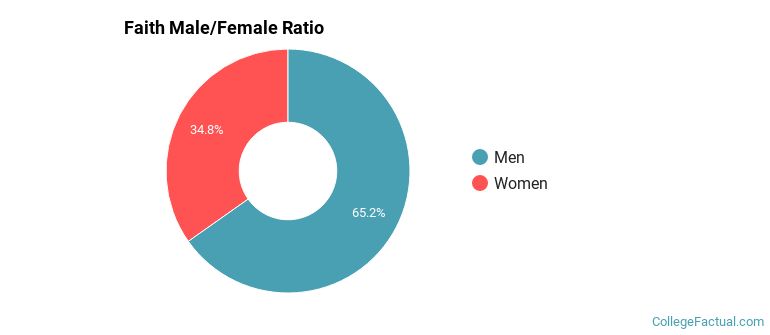
For the gender breakdown for all students, go here.
Faith Racial/Ethnic Breakdown of Undergraduates
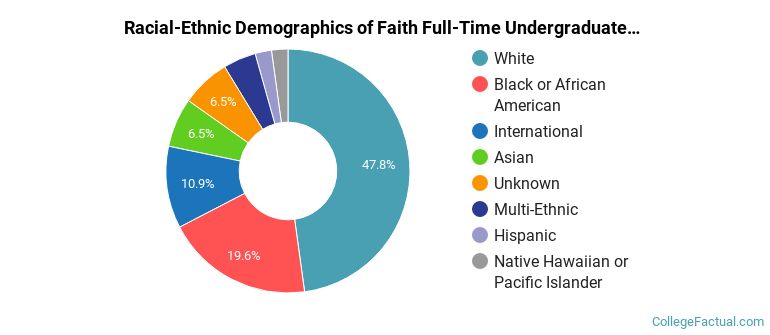
| Race/Ethnicity | Number |
|---|---|
| White | 38 |
| Black or African American | 22 |
| Asian | 14 |
| Hispanic | 5 |
| International | 3 |
| Multi-Ethnic | 2 |
| Unknown | 1 |
| Native Hawaiian or Pacific Islander | 0 |
See racial/ethnic breakdown for all students.
Male/Female Breakdown of Graduate Students
About 43% of full-time grad students are women, and 57% men.
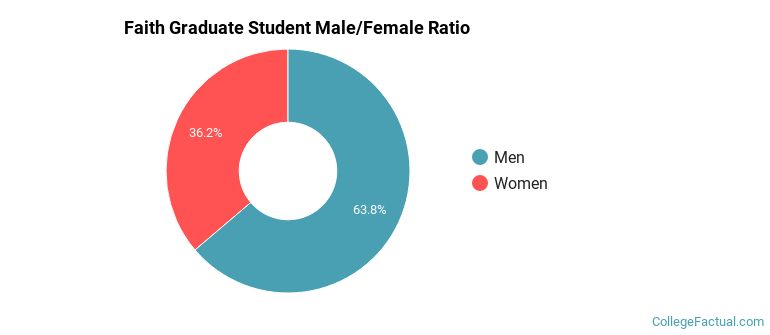
For the gender breakdown for all students, go here.
Faith Racial-Ethnic Breakdown of Graduate Students
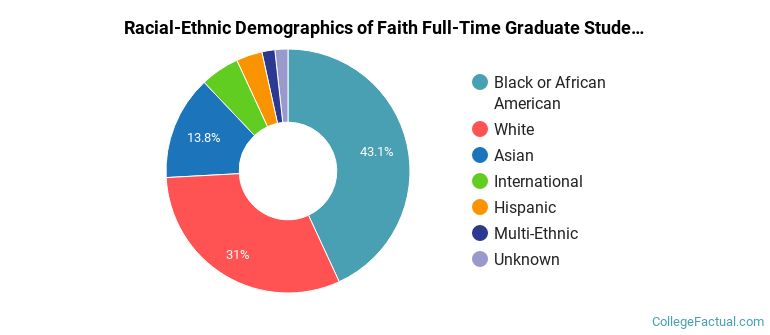
| Race/Ethnicity | Number |
|---|---|
| White | 41 |
| Asian | 34 |
| Black or African American | 24 |
| Hispanic | 6 |
| International | 5 |
| Unknown | 3 |
| Native Hawaiian or Pacific Islander | 1 |
| Multi-Ethnic | 1 |
See racial/ethnic breakdown for all students.
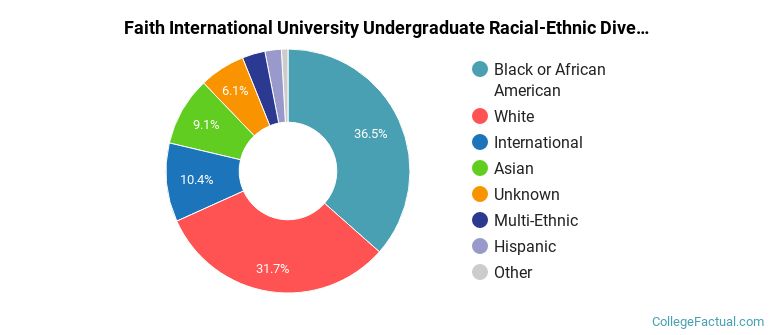
| Race/Ethnicity | Number |
|---|---|
| White | 117 |
| Black or African American | 83 |
| Asian | 66 |
| International | 19 |
| Hispanic | 14 |
| Unknown | 9 |
| Multi-Ethnic | 8 |
| Native Hawaiian or Pacific Islander | 1 |
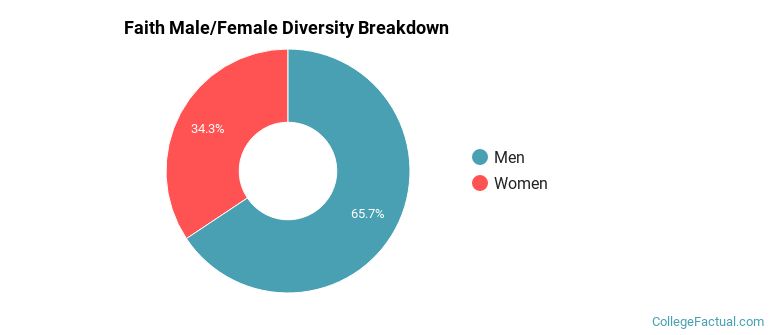
There are approximately 131 female students and 187 male students at Faith.
Faith ranks 2,099 out of 2,183 when it comes to geographic diversity.
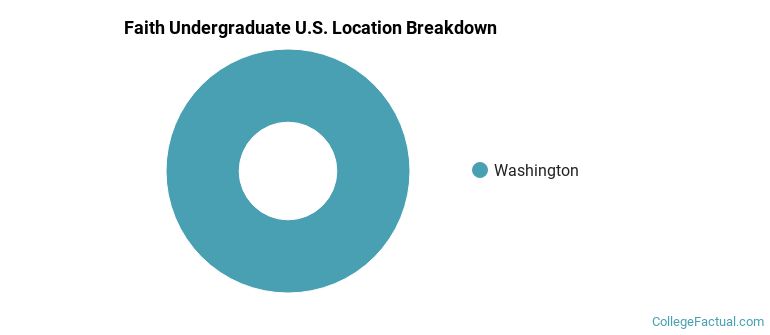
The undergraduate student body is split among 1 states (may include Washington D.C.). Click on the map for more detail.
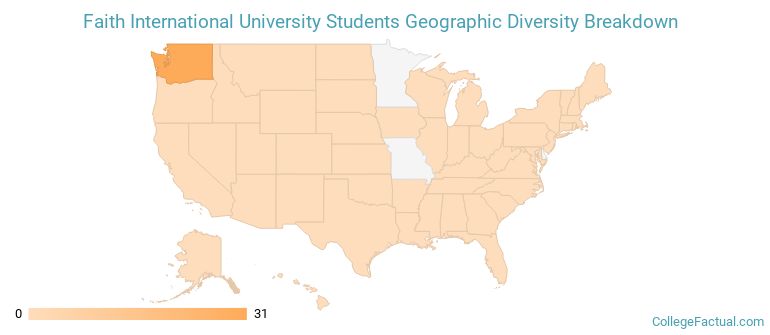
| State | Amount |
|---|---|
| Washington | 31 |
| Alaska | 0 |
| Alabama | 0 |
| Arkansas | 0 |
| Arizona | 0 |
Students from 8 countries are represented at this school, with the majority of the international students coming from South Korea, China, and Kenya.
Learn more about international students at Faith.
A traditional college student is defined as being between the ages of 18-21. At Faith, 4.51% of students fall into that category, compared to the national average of 60%.
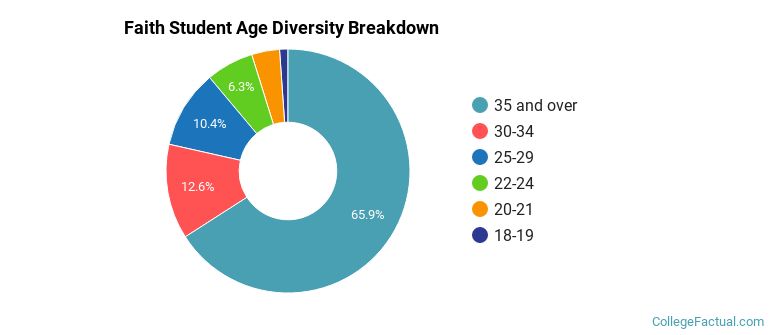
| Student Age Group | Amount |
|---|---|
| 35 and over | 178 |
| 30-34 | 34 |
| 25-29 | 28 |
| 22-24 | 17 |
| 20-21 | 10 |
| 18-19 | 3 |
| Under 18 | 0 |
Footnotes
*The racial-ethnic minorities count is calculated by taking the total number of students and subtracting white students, international students, and students whose race/ethnicity was unknown. This number is then divided by the total number of students at the school to obtain the racial-ethnic minorities percentage.
References
Department of Homeland Security Citizenship and Immigration Services
Read College Factual's Diversity Ranking Methodology.